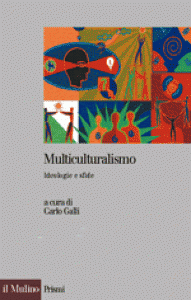
La nuova partecipazione politica: tra pensieri veloci e pensieri lenti.
Catellani, P. (2019). In Allegretti, G., Fasano L., Sorice, M. (a cura di), Politica oltre la politica. Civismo vs autoritarismo, Milano, Fondazione Feltrinelli, pp. 90-113.

Il senno di poi degli elettori: illusioni, delusioni, sorprese.
Bertolotti, M. e Catellani, P. (2018). In ITANES (a cura di), Vox populi. Il voto ad alta voce del 2018, Il Mulino, Bologna, pp. 225-238.

Prevedibilità, nessi causali e attribuzione di responsabilità: le inconsce difficoltà del giudicare col “senno di poi”.
Catellani, P. (2018). In S. Azzali, U. Morera e G. Rojas Elgueta, (a cura di) Errori cognitivi e arbitrato, Il Mulino, Bologna, pp. 227-248.

Partecipazione alla vita pubblica e nuovi media
Alberici, A.I. e Catellani, P. (2016). In A. Quadrio e D. Pajardi (a cura di), La società “ri-pensata”. EDRA Editore, Milano.

The perception of politicians’ morality. Attacks and defenses.
Bertolotti, M. & Catellani, P. (2015). In J. P. Forgas, K. Fiedler, & B. Crano (Eds.). Social psychology and politics, Psychology Press, New York, pp. 112-128.

The perception of politicians’ morality: Attacks and defenses
Catellani, P. & Bertolotti, M. (2015). In J. P. Forgas, K. Fiedler, & B. Crano (Eds.), Social psychology and politics. Psychology Press, New York, pp. 113-128.

Empowering skills for active ageing and healthy living
Antonietti, A., Balconi, B., Catellani, P, & Marchetti, A. (2014).
In G. Riva, P. Ajmone Marsan & C. Grassi (Eds.),
Active ageing and healthy living.
Amsterdam, IOS Press,
pp. 157-171.
The chapter is aimed at describing four different approaches, each supported by experimental findings, which can be adopted to empower life skills in the elderly. The first approach consists in stimulating aged persons by asking them to carry out some tasks aimed at activating the brain and mental processes which are targeted by the intervention. In the second approach the elderly are hinted at thinking about their mental states to understand one’s own and others’ behavior to act as a reflective agent. The third approach is based on the assumption that the communication context can support and improve old people’s skills, if the messages they receive are devised so to focus their attention on relevant information and to elicit relevant cognitive frameworks. According to the fourth approach, aged people can be engaged in activities which enjoy them so to express themselves in personal ways and to practice a wide set of mental functions. Becoming aware of the pros and cons of each approach enables us to choose the kind of intervention which is most suited to the elderly, taking into account the features of the context and the actual resources which can be employed. We also aim at integrating the different approaches so to devise a holistic intervention in which synergies among the methodologies to be applied occur.

Identità, valori e cibo
Catellani, P. & Bertolotti, M. (2014).
In F. Botturi & R. Zoboli (Eds.),
Attraverso il convivio. Cibo e alimentazione tra bisogni e culture,
Vita & Pensiero, Milano,
pp. 101-114.
Che rapporti ci sono tra il cibo che mangiamo, i nostri valori e la nostra identità? Per rispondere a questa domanda in questo capitolo analizziamo anzitutto le relazioni ci sono tra i valori delle persone e le loro scelte alimentari. Scopriamo così che esiste una correlazione significativa tra consumo di carne e di verdura e l’importanza attribuita ad alcuni valori. In particolare, chi mangia spesso la carne dà molta importanza, o più importanza degli altri, ai valori del potere e del successo; chi, al contrario, mangia molta verdura dà molta importanza ai valori della benevolenza e dell’universalismo. Analizziamo quindi più in dettaglio le motivazioni che sono alla base delle scelte alimentari, motivazioni legate alla salute, di natura etica, di natura sociale e infine quelle di tipo ambientale. Ci soffermiamo in particolare sulle motivazioni che inducono le persone a limitare il consumo di carne. Motivazioni legate tra l’altro a diverse convinzioni, ad esempio quelle relative alla capacità mentali degli animali. Da ultimo esaminiamo come le diverse motivazioni alla base delle scelte alimentari possono evolvere e variare nel tempo.

Two psychological routes to right-wing extremism: How Italian workers cope with change
Catellani, P. & Milesi, P. (2007). Two psychological routes to right-wing extremism: How Italian workers cope with change, pp. 105-121. De Weerdt, Y., Catellani, P., De Witte, H. & Milesi, P. (2007). Perceived socio-economic change and right-wing extremism: Results of the SIREN-survey among European workers, pp. 63-83. In J. Flecker (ed.), Changes in working life and the appeal of the extreme right
Ashgate, London.

Juries in Italy: Legal and extra-legal norms in sentencing
Catellani, P. e Milesi, P. (2006).
In M. F. Kaplan e A.M. Martin (a cura di),
Understanding world jury systems through social psychological research,
Psychology Press, New York.
pp. 125-145.
ISBN 978-1-13-800612-6
I
n the Italian judicial system there are both mixed and non-mixed juries. Mixed juries are composed by six laymen, drawn from among citizens with at least a secondary school diploma, and by two trained judges. These juries pass judgment for the most severe crimes only, that is, crimes punished with a 24-year sentence or more. Non-mixed juries, on the other hand, are composed of three trained judges and pass judgement for less severe crimes. A mixed jury is also found in juvenile courts, whose members are two trained judges and two experts chosen among professionals who are competent in juvenile deviance (e.g. psychologists, teachers, and sociologists). In the present chapter, we will focus on how juries refer to legal and social norms in their activity. In case evaluation, both lay and trained judges are likely to set the actual behaviour of case protagonists against how the same were expected to behave. However, what is expected according to social norms may sometimes differ from what is expected according to legal norms. In addition, expectations may differ from one juror to another, leading to possible conflicts in jury decision-making. With specific reference to juvenile courts, it will again be stressed how different judges may focus on different aspects of a judicial case, to the effect of orienting the sentence either toward the prevention of crime, or the promotion of the juvenile defendant. Thus, the two core issues addressed will be (a) the tension between legal and social norms, and (b) adjudication based on the norm of crime prevention (general welfare) vs. the welfare of the juvenile defendant (individuation)...

Un’agenda psicologica per una società multiculturale. I. Ridurre l’incertezza per aprirsi alla diversità
Catellani, P. (2006), In Galli, C. (a cura di), Multiculturalismo. Ideologie e sfide. Il Mulino, Bologna. pp. 139-152.

Identificazioni: dal partito alla coalizione - Pregiudizio: sguardi diversi sugli immigrati - Efficacia: fare o lasciar fare
Catellani, P. e Milesi, P. (2006).
Identificazioni: dal partito alla coalizione,
pp. 73-89
Catellani, P. e Milesi, P. (2006).
Pregiudizio: sguardi diversi sugli immigrati,
pp. 129-149
Catellani, P. e Milesi, P. (2006).
Efficacia: fare o lasciar fare, pp. 151-171
In Catellani, P. e Corbetta, P. (a cura di).
Sinistra e destra. Le radici psicologiche della differenza politica
Il Mulino, Bologna.
ISBN: 978-88-15-10911-8
Making reference to the social identity theory, the chapter investigates party and coalition identification. The intensity of identification of left-wing and right-wing voters with their party and coalition are taken into account. Then, coexistence between party and coalition identifications is considered. Data come from an ITANES survey carried out on a representative sample of the Italian population in 2004. Results show that identification with the coalition is usually lower than identification with the party. Left-wing voters are however more identified than right-wing voters. Besides, while among right-wing voters a stronger identification with the coalition leads to a lower party identification, among left-wing voters the two identifications coexist.
The chapter investigates negative prejudice towards immigrates shown by left- and right-wing people, as well as by people refusing to place themselves on the left-right continuum. Data are based on a survey carried out within the ITANES program on a representative sample of Italian voters. Differences in the levels of conventionalism, social dominance orientation, individual and collective uncertainty are investigated. Results show that lowest levels of prejudice are found among left-wing participants and the highest among right-wing participants and “not-placed” participants. Conventionalism and social dominance orientation are related with prejudice in all three groups of participants. Individual and collective uncertainty play instead a major role among not-placed participants. These results suggest how contextual conditions play a role in the development of prejudice in addition to relatively stable...

Italy: The offspring of fascism - Schismatic tendencies
Milesi, P., Chirumbolo, A. e Catellani, P. (2006).
Italy: The offspring of fascism,
pp. 67-92.
Catellani. P., Milesi, P. e Crescentini, A. (2006).
Schismatic tendencies,
pp. 204-223.
In B. Klandermans e N. Mayer (a cura di),
Extreme right activists in Europe: Through the magnifying glass
Routledge, London.
ISBN: 978-0-415-49443-4
The chapter analyses how the issue of fascism is dealt with by Italian extreme right-wing party activists when they account for their political involvement. Given the stigmatization of fascism in Italy since the Second World War, membership in parties that present themselves as the offspring of fascism is likely to foster a situation of psychological conflict in their members. On the one hand, continuity with fascism may be a way of stressing one’s existential consistency, which is a basic human need. On the other, showing continuity with fascism implies being exposed to discrimination and stigmatization , which is a threat for a positive social identity. Through a qualitative analysis of semi-structured interviews, the chapter investigates how extreme right-wing party activists cope with such a conflict. It emerges that fascism is represented as a positive heritage, but also as the reason for frequent episodes of discrimination, suffered by the interviewees themselves or by their relatives. Perceived discrimination fosters party identification, which in turn contributes to attenuate negative consequences of discrimination. The results of the present qualitative analysis enlarge upon and add to what has been shown by previous research in this area, by highlighting a number of strategies people use so as to transform a stigmatized political membership into a rewarding psychological experience. While continuity with fascism (and related processes of positive reinterpretation) provides interviewees with ideological as well as existential consistency, perceived discrimination (and related coping processes) fosters group compactness and increased in-group identification.
Publisher website

Tutta colpa dell’Euro - Successo o benevolenza? I valori degli elettori
Catellani, P. (2006). Tutta colpa dell’Euro, pp 225-234, Catellani, P. e Milesi, P. (2006). Successo o benevolenza? I valori degli elettori, pp 145-162. In ITANES, Dov’è la vittoria? Il voto del 2006 raccontato dagli italiani. Il Mulino, Bologna.

When the social context frames the case: Counterfactuals in the courtroom
Mandel, D., Hilton, D. & Catellani, P. (2005). Introduction, pp. 1-7. Catellani, P. e Milesi, P. (2005). When the social context frames the case: Counterfactuals in the courtroom, pp. 183-198. In D. Mandel, D. Hilton e P. Catellani (a cura di), The psychology of counterfactual thinking. Routledge, London.

Identità multiple nella società globale
Catellani, P. (2005).
In Catellani, P. (a cura di)
Identità e appartenenza nella società globale.
Vita e Pensiero, Milano,
pp. 17-44.
ISBN 978-3-642-41544-9
The chapter aims at showing that research results on the processes of social identification in the socio-political and work context may offer useful suggestions to politicians and policy-makers interested in making decisions that lead to an improvement of individual and social living conditions in a global society. Social identity in uncertainty conditions is taken into account first, reviewing research results of how people react to the need of social belongingness when they find themselves in (objective or subjective) conditions of uncertainty and threat. Multiple social identities are then examined, especially those characterized by hierarchical inclusiveness.
Publisher website

Ascesa e declino: percezione di cambiamento in contesti lavorativi
Milesi, P., Covelli, V. e Catellani, P. (2005).
In Kaneklin, C., Scaratti, G. e Bruno A. (a cura di),
I processi di generazione delle conoscenze nei contesti organizzativi e di lavoro.
Vita e Pensiero, Milano,
pp. 123-149.
Il capitolo presenta i diversi livelli ai quali può essere percepito il cambiamento nel contesto lavorativo e esamina come esso incida sulle percezioni di controllo e di appartenenza delle persone coinvolte. A questo scopo, vengono analizzate trentasei interviste a persone che hanno vissuto un cambiamento (positivo o negativo) nel loro contesto lavorativo, impiegate in una varietà di settori occupazionali. I risultati indicano che il cambiamento viene qualificato soggettivamente come "ascesa" o "declino": 1) in rapporto alla prevedibilità e volontarietà del cambiamento e alla percezione di possedere le competenze necessarie per gestirlo; 2) in rapporto al modo in cui il bisogno di inserirsi e sentirsi parte di un gruppo viene soddisfatto.
Publisher website

I corsi online all’università: aspetti cognitivi e psicosociali
Antonietti, A., Catellani P., Ciceri R. e Gilli G. (2004).
In Scurati C. (a cura di),
E-learning/Università. Esperienze, analisi, proposte.
Vita e Pensiero, Milano
pp. 243-283.
ISBN
Publisher website

Political psychology. Overview
Catellani, P. (2004). In C. Spielberger (a cura di), Encyclopedia of applied psychology. Elsevier, London, vol. 2, pp. 51-65.

1985 - 2003
2002
Catellani, P. e Alberici, I.A. (2002). Relazioni di status e identità sociale. In M. Cesa Bianchi e A. Antonietti (a cura di), Dentro la psicologia. Contesti, teorie, ricerche, personaggi, Mondadori, Milano, pp. 239-248.
Milesi, P. e Catellani, P. (2002). L’analisi qualitativa di testi con il programma Atlas.ti. In B. Mazzara (a cura di), Metodi qualitativi in psicologia sociale. Prospettive teoriche e strumenti operativi, Carocci, Roma, pp. 283-304.
2001
Catellani, P. & Milesi, P. (2001). Counterfactuals and roles: Mock victims’ and perpetrators’ accounts of judicial cases, European Journal of Social Psychology, 31, 247-264.
2000
Catellani, P. e Pajardi, D. (2000). La testimonianza, in A.M. Clerici, A. Quadrio Aristarchi e M. Simionato (a cura di), Psicologia e problemi giuridici, Giuffrè, Milano, pp. 209-296.
1999
Catellani, P. (1999). L’ “expertise”, in V. Girotto e P. Legrenzi (a cura di), Psicologia del pensiero, Il Mulino, Bologna, pp. 175-201.
1998
Catellani, P. e Milesi, P. (1998). Identità regionale, nazionale, europea, in A. Quadrio (a cura di), Nuove questioni di psicologia politica, Giuffré, Milano, pp. 219-272.
1997
Catellani, P. (1997). Comportamento di voto e azione collettiva: il ruolo dell’identità sociale, Giornale Italiano di Psicologia, 24, pp. 751-754.
Catellani, P. (1997). Psicologia politica, Il Mulino, Bologna.
Catellani, P. e Milesi, P. (1997). Reale e controfattuale nel ragionamento giudiziario, Kos, 138, pp. 46-51.
1996
Catellani, P. (1996). Political psychology, in G. Semin e K. Fiedler (Eds.), Applied social psychology. Sage: London, pp. 282-311.
Catellani, P. (1996). Il ragionamento giudiziario: competenze generali e competenze specifiche, in C. Cabras (a cura di) Psicologia della prova, Giuffrè, Milano, pp. 291-309.
Catellani, P. e Camussi, E. (1996). La soluzione di un problema politico in militanti e non militanti, Ricerche di Psicologia, 20, pp. 47-65.
1995
Catellani, P. e Quadrio, A. (1995). Psicologia politica e giuridica, in L. Arcuri (a cura di), Psicologia sociale, Il Mulino, Bologna, pp. 503-528.
1994
Catellani, P., Pajardi, D. e Bibbiani...
 Italiano (IT)
Italiano (IT)  English (UK)
English (UK) 
